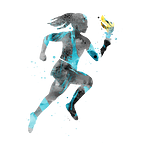Developing a plan for launch
When, with who & how
When deciding when to launch, we considered multiple elements including:
- Timing of the Olympics/Paralympics (aka would this content be timely/top of mind for people) >> We decided that launching on the last day of what-would-have-been Tokyo’s Olympic competition would capture the news cycle and enthusiasm for the Olympic season
- Having enough compelling content (through my research I found that it was best to launch with a minimum of 2 episodes and ideally 3 and a trailer to provide listeners with a sense of the range of your content) >> I had been working for 7 weeks before launch, gathering content and editing it. In all of my research I had heard that it was best to gather content upfront and distribute it later once you have a thoughtful distribution strategy.
- Having a diversity of content: athletes from various parts of the world, are of different races, ethnicities and religions, play different sports, are passionate about different causes, and are a combination of Olympic and Paralympic athletes >> Securing interviews with international athletes was particularly challenging until I identified two individuals who I was going to actively seek out
When I originally thought about my launch strategy, I planned to have two separate launches, one building upon the other: one marking the end of the Olympics and then the next marking the end of the Paralympics several weeks later. After running this plan by my academic advisors, I realized this approach ran counter our message of unity between Olympic and Paralympic athletes, so we adjusted this plan to incorporate both Olympic and Paralympic athletes in the initial launch. While the original plan was based off of capturing the excitement and press cycles of two separate Games, so many of the Paralympians I had spoken with voiced frustrations over feeling they like played second fiddle to the Olympians. I wanted no part in reproducing those feelings or dividing the athletes based on ability, so I adjusted my upcoming episodes to trade off between Paralympians and Olympians.
One of the most challenging parts of developing my plan for launch (and in simply finding candidates for interviews) was finding non-USA athletes to feature. Given that I live in the US, the majority of my network is here. I have had to work extremely hard to secure interviews with athletes from various parts of the world. The Harvard Kennedy School has been a tremendous asset in this regard given the geographic diversity of my classmates and faculty. That said, if you know of a non-USA athlete who you think would be a good fit to feature in a future episode, please reach out: jamiemittelman@hks.harvard.edu.
We also needed to decide how to launch. Was it best to launch a trailer followed by one episode? Two episodes? After speaking with numerous individuals in the podcasting space I decided to launch with:
- a trailer >> this was beneficial as it provided a high-level overview of the season and provided listeners with a sense of the range of content. One challenge in developing this was that I needed to source a lot of different content to show variety. At the same time, I had been sourcing my interviews without products I could point to in order to show my work.
- three episodes (Becky Sauerbrunn, Sanda Aldass, and Manasi Joshi) >> launching with three episodes allowed me to tap into as many audiences as possible. I also wanted to show listeners that I was changing up my podcast formats, so having multiple episodes at once was crucial to not losing listeners early on.
